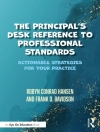Use media literacy to reach all students!
The Teacher′s Guide to Media Literacy starts by asking, ‚What does it mean to be literate in today′s world, and how can those literacy skills be developed?‘ The authors answer those questions by providing concrete, innovative ways to integrate media literacy across the curriculum and teach students to be independent, skilled, and reflective thinkers. Through dozens of suggested activities, teaching strategies, and lessons, this book′s unique vision allows schools to
- Integrate media literacy into teaching at all grade levels and core content areas
- Address key education standards
- Teach 21st-century skills and higher-order critical thinking
- Engage students by bridging schoolwork with their lives outside the classroom
In addition to dozens of activity ideas, the text and companion website include self-reflection exercises, voices from the field, a glossary of terms, and seven annotated, original, classroom-tested lesson plans that illustrate different approaches to media literacy in the classroom. In a time of hectic schedules and ever increasing expectations, the authors help teachers reframe their instruction to focus on the skills students need to succeed in the digital age.
Inhaltsverzeichnis
List of Figures and Tables, Voices from the Field, and Reflection Boxes
Preface
Acknowledgments
About the Authors
Introduction
1. What Do We Mean by ‚Media‘?
2.. What Is ‚Media Literacy‘?
3. What Is Media Literacy Education?
4. When Are Questions the Answer? Teaching Students How to Analyze Media Messages
5. General Approaches to Teaching Media Literacy Across the Whole Curriculum
6. Integrating Media Literacy Into Specific Content Areas
7. Media Literacy Lesson Plans
8. Does It Work?
9.’Sounds Great, But I Don′t Have Time!‘ Getting Past the Barriers and Why It′s Worth It
Afterword: Where Do We Go From Here?
Appendices
References
Endnotes
Index
Über den Autor
Faith Rogow was the founding president of the National Association for Media Literacy Education (NAMLE), a founding advisor of Project Look Sharp, and a founding editorial board member of the Journal for Media Literacy Education. She has been a leading media literacy educator, theorist, and strategist for more than two decades, with special interest in early childhood, pedagogy, and diversity issues. Her work is notable for merging academic expertise with grassroots sensibilities. In 1996 she created Insighters Educational Consulting to “help people learn from media and one another.” An award-winning speaker, master trainer, and training designer, she has taught thousands of educators, child care professionals, media professionals, and parents to understand and harness the power of media. She has created educational outreach materials for projects ranging from Sesame Street and Sid the Science Kid to hundreds of independent films, including those featured on PBS’ P.O.V. She is the author of many articles about media literacy, as well as Gone to Another Meeting: A History of the National Council of Jewish Women (University of Alabama Press, 1993). She received her Ph.D. in History (1987) from Binghamton University.












